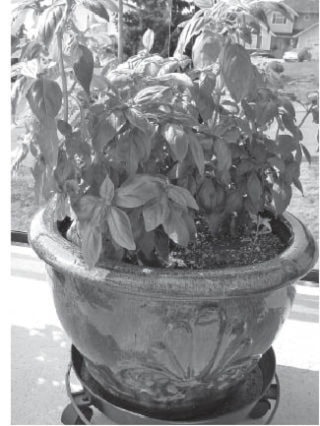It’s resolution time with a new year just around the corner.
And I say to heck with promises of being on top of the housework and laundry. I always focus on the changes I want to make in my garden. A question of priorities. And when it comes to greening the garden, it should be a priority.
As gardeners, we are really on the front line of experiencing climate change. Just working in the soil, growing our food and tending to our plants exposes us to the vulgarities of our local weather patterns.
So what can we do to help our little patch of the planet? Here are a few tips to make your garden a “greener” space.
1. Go organic. With our new pesticide bylaws, this one is now mandatory. Many of the chemical fertilizers and insect control products contain ingredients that are especially harmful to the environment. Creeks and streams are also impacted through these chemicals leaching into the groundwater.
2. Compost. By composting uncooked food scraps, leaves and lawn clippings, you are reducing your waste and creating a nutrient-rich fertilizer for the garden. Applying compost promotes healthy plant growth that results in reduced attacks from insect pests. Making your own compost also reduces your need to truck in organic fertilizer.
3. Collect rainwater. This is a simple way to reuse rainwater. It is amazing how much water can be collected from a roof. Downspouts are easily rerouted into rain barrels or other suitable containers, allowing you access to a water source during drier periods.
4. Utilize native and drought-tolerant plants. Indigenous plants are already adapted to local conditions and well-positioned to handle weather fluctuations. They are easy to grow and maintain, generally requiring less water and fertilizing than ornamental hybrid varieties. Drought-tolerant plants are also useful in the landscape design with their acceptance of drier conditions.
5. Landscape wisely. Think about your garden layout, the hardscape elements and the materials you use. Hardscaping is essential for the overall effect of the garden and the materials must be chosen with care.
Cedar is preferred over pressure-treated lumber. Paths should be constructed of porous elements to allow rain to soak into the ground. Likewise, concrete and paved areas should be kept to a minimum to reduce water run-off. Design garden beds and install plants to suit the contour of the property and the existing elements, such as trees.
6. Water efficiently. Getting water directly to your plants cuts down on the amount needed to keep them healthy and happy. It also means you are not watering unnecessary parts of the landscape such as sidewalks or driveway.
7. Mulch. Applying compost, leaves, seaweed, or bark mulch around your plants reduces evaporation, resulting in the need to water less frequently.
8. Grow your own food. What could be fresher? Think of the calories you burn when you walk into the garden for the dinner ingredients instead of the harmful carbon you emit if you were to drive to the store.
9. Recycle. Instead of tossing those plastic pots, yogurt containers or what-have-you into the garbage or recycle bins, consider re-using them to start next year’s vegetable and flower seeds and grow on the seedlings.
10. Embrace green practices. Who needs a gym when you can have a workout in the garden? A push-mower is great for the waistline over the emissions from a gas-powered one. Biceps are ensured using hand clippers over electric hedge trimmers. Solar lights are every bit as brilliant as electric plug-ins.
11. Attract beneficial insects. These guys are very necessary for pollinating plants and keeping pests at bay, so you want to attract a healthy population. Without them, you inherit the job.
12. Attract birds. Drawing birds into your garden ensures help in keeping garden pests under control.
It may seem like miniscule amounts of carbon emissions when you compare your garden to a whole country, but change begins at home. Never underestimate the little guy.
May your garden flourish in 2011!
Leslie Cox co-owns Growing Concern Cottage Garden in Black Creek. Her column appears every second Friday.



